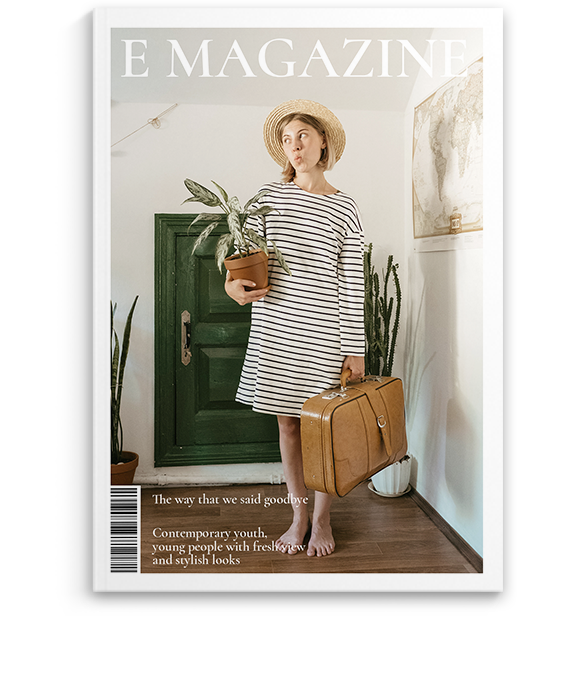The Haunting Life of Surrealist Painter Leonora Carrington
The Haunting Life of Surrealist Painter Leonora Carrington
One good example of the surrealist artists that outrightly defied all and any sorts of conformation was a woman named Leonora Carrington. Hailing from a wealthy but orthodox Christian family in England, Carrington’s childhood was a lonely one, relying on her own imagination to keep her company. Although, surrounded with all kinds of animals at her parents estate, and a watchful nanny who filled her head with traditional English folktales and Celtic myths, she grew up bringing these stories to life through drawings and poems, often creating her own little worlds as the one she lived in proved to be unentertaining. This would prove to be a strength that she later utilises in her artistic practices. I believe that every artwork has an autobiographical element belonging to the artist, but Carrington proved incredibly successful in creating a way for her art and literature to not only allow the viewer and reader to peek into her psyche but also into her life as she vividly documented her life. Her choice of rebellion consisted of outright objections and displaying them in the form of satire, both inviting and frightening.

One such example that fully demonstrates her visualisation of her perception of her life is a painting from 1986-7 called Crookhey Hall, which was the name of the estate where she grew up. Throughout her life, she produced works which were regarded to be her significant brand as highly autobiographical and with embedded occult symbolism as she reflected back at her time in England and Europe. Art critic Gloria Feman Orenstein wrote an article in which she described Carrington’s relationship between her unconscious and the external influences that worked together to create the fantastical works she is known for. Orenstein writes, “Leonora Carrington’s art probes and delves into the uncharted vistas of the psyche, searching for the new territory that we discover when we are in touch with our psychic powers, with a fuller knowledge of our interior world, and with the beings both mythical and archetypal that inhabit it.” While finding the current world distasteful, the artist found solace in others, that she believed to come naturally to her. The integration of characters from folklore, beings that can be classified as hauntings or supernatural entities, and figments that materialised from her imagination were woven into narratives that evolved as she grew up, and only metamorphosed.
Crookhey Hall shows a landscape where her familial house stands, the lithograph being drawn so as to provide a visualisation of the surrounding geography as well. Instead of the manor catching the viewer’s eye at once, it is instead drawn in a greyish blue and merges with the landscape itself, perhaps to suggest its lack of importance in Carrington’s opinion. The handful of eerie beings take centre stage in this composition, further pushing the house into the background. It can be noted that Carrington’s family home can be seen as a symbol of the rigid British society that her family belonged to. If choosing to continue this theory, her composition includes a woman figure almost as tall as the house itself, a surrealist feat which could be a nod to absurdism as well. This could be one of the examples of the artist injecting folklore into her work, as the figure seems to be from an Irish legend of ‘Goll Mac Morna’, a female giant, no doubt a tale from her childhood that stuck with her. In drawing the figure as she did, Carrington attempts to strip the manor of its bestowed prestige, thus rejecting the orthodox and patriarchal society. Additionally, it sits in the same space as a number of seemingly immaterial entities, hybrid figures, and animals, thereby creating an occult world that is composed of complementary and interactive opposites.
The eye of the viewer immediately rests on the two central figures who act out a haunting, and a nearby onlooker who expresses horror. To the far left of the composition, two dogs can be seen turning away from the house, as if to suggest it is uninhabitable to both man and dog. This idea of a habitable place is seen frequently in Carrington’s work, although it is the modern society she finds uninhabitable and any opposing realm she found familiarity in. I believe the main takeaway from this lithograph is the fact that the once exalted manor has been reduced to an animated haunted house.
Crookhey Hall proves to be a visual embodiment of what philosopher Michael Löwy described in his book, Morning Star: Surrealism, Marxism, Anarchism, Situationism, Utopia. Löwy discussed the yearning of a utopian multiverse where modern day regulations could not take root: “Nostalgic for a lost paradise (real or imaginary) Romanticism is in opposition to the melancholic mood of despair, to the quantifying mind of the bourgeois universe, to commercial reification, to the platitudes of utilitarianism, and above all, to the disenchantment of the world.”
Leonora Carrington’s subliminal process consisted of her childhood experiences that were embedded within her and her imagination proved to be a real motivating force that acted upon creative matter in every way possible. She sought the ‘marvellous’, established a doctrine that celebrated the irrational, and developed a sensibility of perceiving reality until there was little to nothing ‘real’ about it. Her entire oeuvre is a testament to the doctrines of surrealism. Her way of soft rebellion was to utilise anything but the pre-established notions upon which traditional society was set.







Leave a Reply